
Powelliphanta is a genus of large, air-breathing land snails, pulmonate gastropods in the family Rhytididae, found only in New Zealand. They are carnivorous, eating invertebrates, mostly native earthworms. Often restricted to very small areas of moist forest, they are prey to introduced mammalian predators, and many species are threatened or endangered.
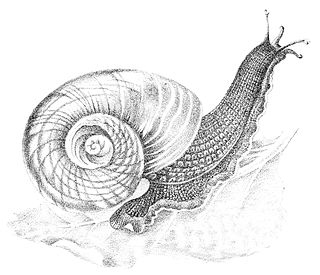
Paryphanta busbyi is a species of large predatory land snail, a terrestrial pulmonate gastropod mollusk in the family Rhytididae.

Placostylus, or flax snails, are a genus of very large, air-breathing land snails, terrestrial pulmonate gastropod molluscs in the family Bothriembryontidae.

The Lord Howe flax snail or the Lord Howe placostylus, scientific name Placostylus bivaricosus, is a species of large air-breathing land snail, a terrestrial pulmonate gastropod mollusc in the family Bothriembryontidae.
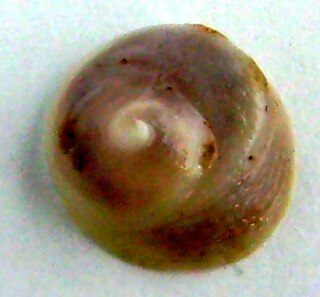
The Calyptraeidae are a family of small to medium-sized marine prosobranch gastropods.

Sigapatella is a genus of small to medium-sized sea snails, marine gastropod molluscs in the family Calyptraeidae, the slipper snails, Chinese hat snails, and cup-and-saucer snails.
Amphidromus cognatus is a large camaenid land snail endemic to Australia.
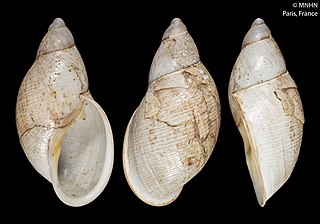
Leucocharis pancheri is a species of air-breathing land snails, terrestrial pulmonate gastropod mollusks in the family Bothriembryontidae.

†Leucocharis porphyrocheila is a species of air-breathing land snails, terrestrial pulmonate gastropod mollusks in the family Bothriembryontidae.
Basileostylus bollonsi, common name the New Zealand flax snail or pupuharakeke, is a species of air-breathing land snail, a terrestrial pulmonate gastropod mollusc in the family Bothriembryontidae.

Placostylus eddystonensis is a species of air-breathing land snail, a pulmonate gastropod mollusk in the family Bothriembryontidae.

Placostylus fibratus is a species of large air-breathing land snail, a pulmonate gastropod mollusk in the family Bothriembryontidae. This species is endemic to New Caledonia.

A land snail is any of the numerous species of snail that live on land, as opposed to the sea snails and freshwater snails. Land snail is the common name for terrestrial gastropod mollusks that have shells. However, it is not always easy to say which species are terrestrial, because some are more or less amphibious between land and fresh water, and others are relatively amphibious between land and salt water.
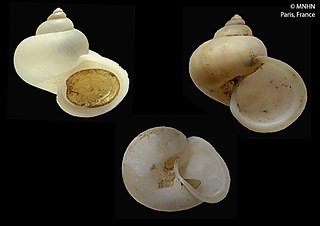
Leptopoma perlucidum is a species of land snail with a gill and an operculum, a terrestrial gastropod mollusk in the family Cyclophoridae.
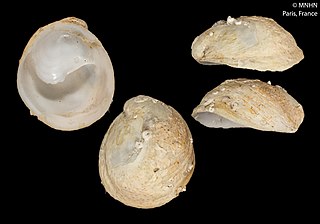
Crepipatella is a genus of sea snails, marine gastropod mollusks in the family Calyptraeidae, the slipper snails and cup-and-saucer snails.

Placostylus ambagiosus is a species of flax snail, a large air-breathing land snail, a terrestrial pulmonate gastropod mollusc in the family Bothriembryontidae.

Plesiothyreus cytherae is a species of sea snail, a marine gastropod mollusk in the family Phenacolepadidae.

Clithon corona is a species of brackish water and freshwater snail with an operculum, a nerite.
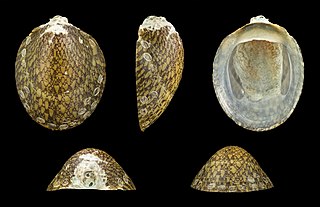
Septaria porcellana is a species of freshwater snail, a gastropod mollusk in the family Neritidae.
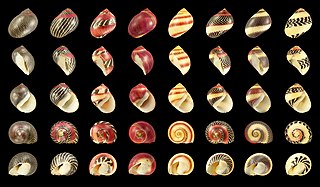
Vittina waigiensis is a species of a freshwater snail, an aquatic gastropod mollusk in the family Neritidae.

















